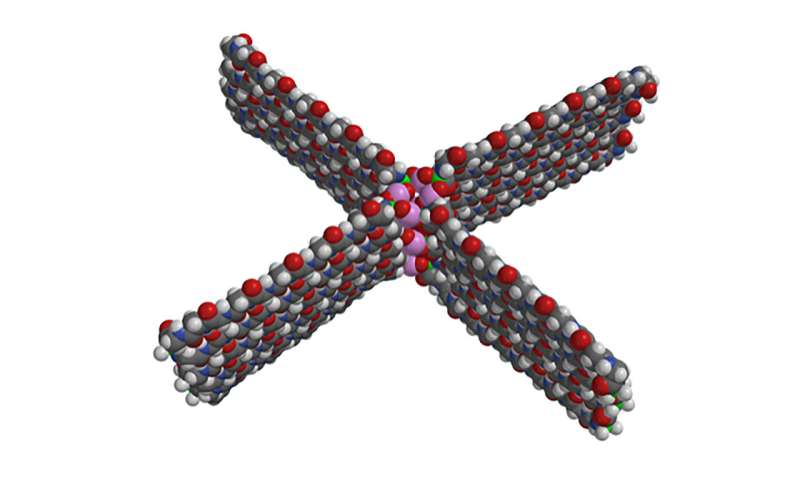Polymers in meteorites provide clues to early solar system

Many meteorites, which are small pieces from asteroids, do not experience high temperatures at any point in their existence. Because of this, these meteorites provide a good record of complex chemistry present when or before our solar system was formed 4.57 billion years ago.
For this reason, researchers have examined individual amino acids in meteorites, which come in a rich variety and many of which are not in present-day organisms.
In Physics of Fluids, researchers from Harvard University show the existence of a systematic group of amino acid polymers across several members of the oldest meteorite class, the CV3 type. The polymers form organized structures, including crystalline nanotubes and a space-filling lattice of regular diamond symmetry with density estimated to be 30 times less than water.
"Because the elements required to form our polymers were present as early as 12.5 billion years ago, and there appears to be a gas phase route to their formation, it is possible that this chemistry was and is present throughout the universe," said author Julie McGeoch.
Preventing terrestrial contamination was a top priority for the researchers. They devised a clean room method using a clean stepper motor with vacuum-brazed diamond bits to drive several millimeters into the meteorite sample before retrieving newly etched material from only the bottom of the hole. Several drill bits were used in a single etch, all being cleaned with ultrasonification.
The resulting micron scale meteorite particles were then placed in tubes and stored at minus 16 degrees Celsius. Polymers were induced to diffuse out of the micron particles via Folch extraction, which involves two chemical phases related to different solvents with different densities.
Mass spectrometry revealed the existence of the polymers, which were composed of chains of glycine, the simplest amino acid, with additional oxygen and iron. They had a very high deuterium-to-hydrogen-isotope ratio that confirmed their extraterrestrial origin.
This research was inspired by observations on a small, highly conserved biological protein that entrapped water. That finding suggested if such a molecule could form in gas phase space, it would aid early chemistry by supplying bulk water.
The researchers employed quantum chemistry to show amino acids should be able to polymerize in space within molecular clouds, retaining water of polymerization. Many experiments followed using meteorites as the source of polymer culminating in 3D structures.
Going forward, the researchers hope to get more detail of the glycine rods via continued X-ray analysis. Other polymers in the same class remain to be characterized and could reveal the energetics of polymer formation.
More information: "Structural organization of space polymers," Physics of Fluids, DOI: 10.1063/5.0054860
Journal information: Physics of Fluids
Provided by American Institute of Physics





















